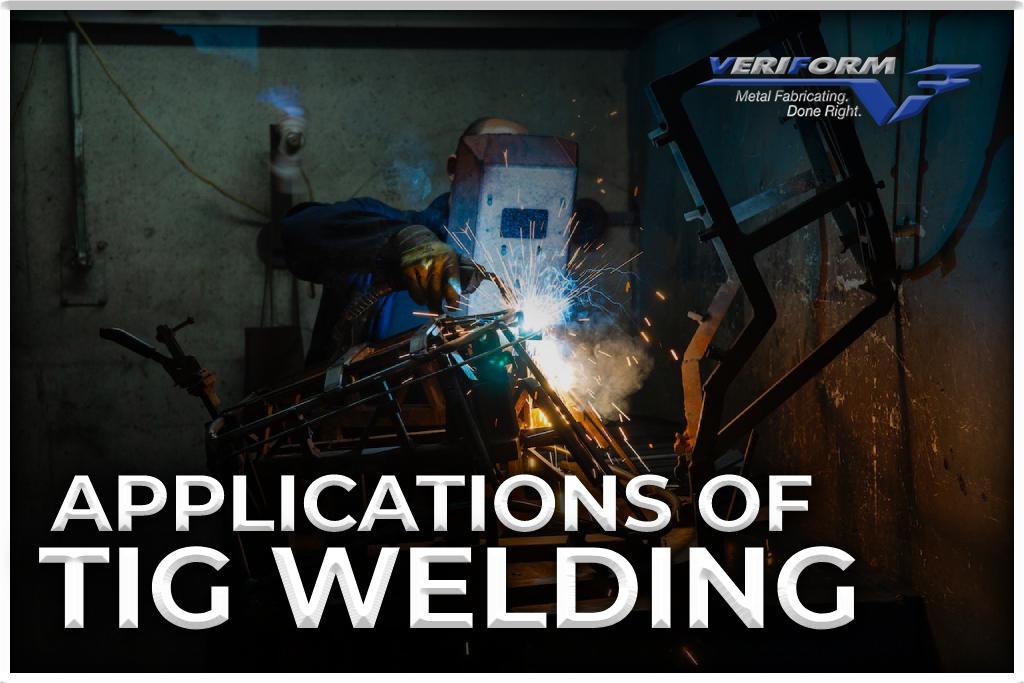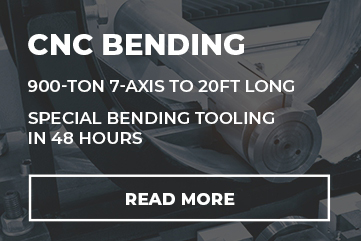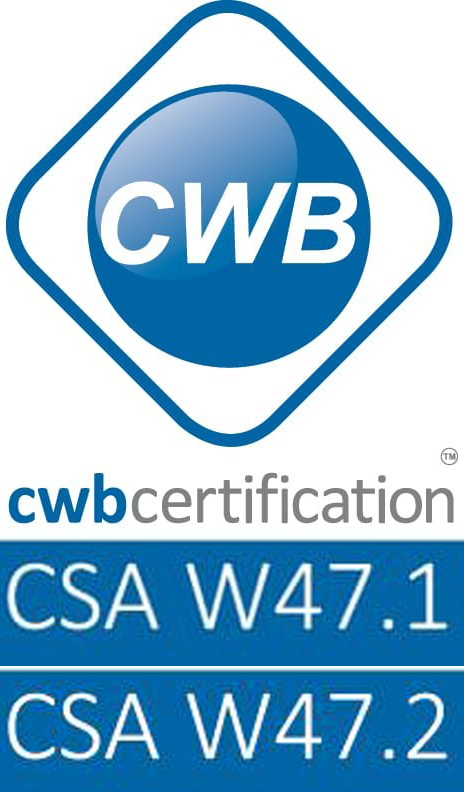News
Applications of TIG Welding: Analysis of Advantages & Disadvantages

Tungsten Inert Gas (TIG) welding, also known as Gas Tungsten Arc Welding (GTAW) is a form of arc welding that uses a non-consumable tungsten electrode to create the weld. Due to their high performance, strength, and reliability, GTAW welds are commonly used in aerospace and nuclear energy.
In the 1940s, TIG welding skyrocketed in popularity after successfully joining magnesium and aluminum. Today, it’s an appealing replacement for gas and manual metal arc welding because it uses an inert gas shield instead of slag to protect the weld pool.
At VeriForm Inc, TIG welding is one of our core processes due to its corrosion and crack-resistant welds and compatibility with a wide range of metals and fillers. In this article, we look at how TIG welding works and analyze both its advantages and disadvantages in terms of application, operator skill, and efficiency.
TIG Welding: the Process
During TIG welding, a pointed tungsten electrode and the workpiece are joined by an arc in an inert environment of helium or argon. Small intense arcs created by these pointed electrodes are ideal for precision and high-quality welding. Since the electrode is not consumed, welders don’t need to balance the heat input from the arc. Filler metal must be added separately to the weld pool when it is needed.
Advantages of TIG Welding
Make Clean, High-Quality Welds
When appearances matter, you can create clean welds with TIG due to its superior arc and weld puddle control. TIG welding allows you to control the weld puddle’s temperature with a foot pedal, similar to driving a car, giving you precise control over the weld bead. Therefore, TIG welding is ideal for cosmetic welds such as automotive and metal sculpting.
In addition:
- With TIG welding, no smoke or fumes are produced, unless the metal being welded contains oil, grease, paint, lead, or zinc. Welding should begin with a clean base metal.
- The welding puddle only contains the necessary amount of filler metal, so there is no spatter or sparks when you work with clean metal.
- No flux needs to be applied or used because the Argon gas protects the weld puddle from contamination. There is also no slag to obstruct your view of the weld puddle and the finished weld won’t have any slag that needs to be removed between passes.
Only One Shielding Gas is Needed
The versatility of Argon allows you to TIG weld all metals and thicknesses, so you only need one gas in your shop. This simplifies the welding process since you don’t have to work with a variety of gas types.
More Versatile Welding
You can make TIG welds in any position – flat, horizontal, vertical or overhead. This versatility makes it an ideal option for shops that produce items like roll cages or need to carry out welding work in tight or confined locations.
Furthermore, TIG welding can weld a greater variety of metals and alloys than any other method available. You can use this process to weld steel, nickel alloys, bronze, copper, magnesium and even gold. In the case of thin sheet metal, there is no better arc welding process: TIG prevents warping, discolouration, and burn-through by using multiple arc and heat control methods.
Greater Operational Control
TIG welding uses tungsten electrodes to create the electrical arc, which improves control. Unlike stick or MIG welding, where a consumable electrode melts into the weld area, tungsten electrodes heat and melt the filler material that is fed into the weld area by the operator. The level of control can make a difference in the quality of the results.
In addition:
- Foot pedals control amperage to the electrode, which is not the case with other welding methods, such as MIG (gas metal arc welding), in which the arc voltage is set at a preset value. A TIG welding setup has variable amperage, which is one of the main differences between it and processes like MIG welding.
- TIG welding’s filler material application helps to achieve control. As we mentioned before, TIG welding electrodes are non-consumable, so the operator can better control the amount of filler rod used by separating the filler metal application from the heating step. MIG welding, on the other hand, uses the gun as both an electrode and a filler material.
Disadvantages of TIG Welding
TIG Welding Can Be Difficult
Although TIG welding equipment and materials are relatively affordable, skilled and experienced technicians are needed to perform the process, which can result in higher labour costs. (Even the most experienced welders gradually switch over to TIG welding.)
Welders without experience have a hard time handling heat with the pedal, as an accidental jerk will create small welding craters on the metal surface. Improperly performed inclusions, contaminations, and unbalanced heating can result in warped or defective products, as well as wasted materials.
TIG Takes Longer
TIG welding takes a lot of time. The kind of precision it’s known for is extremely time-consuming compared to other technologies like stick welding. The machines themselves also need to be thoroughly cleaned after each use: since any contamination will corrode the surface being welded, there is no room for error.
Overheating is a Risk
As the temperature is controlled by a pedal, distractions or operational errors can cause overheating. Upon overheating, the metal surface will discolour instantly, making the joint brittle and prone to breaking. You won’t be able to reduce the amperage smoothly if you haven’t developed the pulsing ability. Overheating will result in every time.
VeriForm Inc.: Your Welding and Fabrication Experts
TIG welding is one of many state-of-the-art technologies that have a place in modern metal fabrication shops. At VeriForm Inc, our CWB CSA W47.1 and W59 certified welders deliver expert and outstanding results on your fabrication projects, and all oversized or complex parts are welded on our Demmeler Bluco fabrication tables for extra precision. If you have a routine or complex welding project, we’re here to help. Learn more by visiting our website, calling 519-653-6000 or contacting us online.








